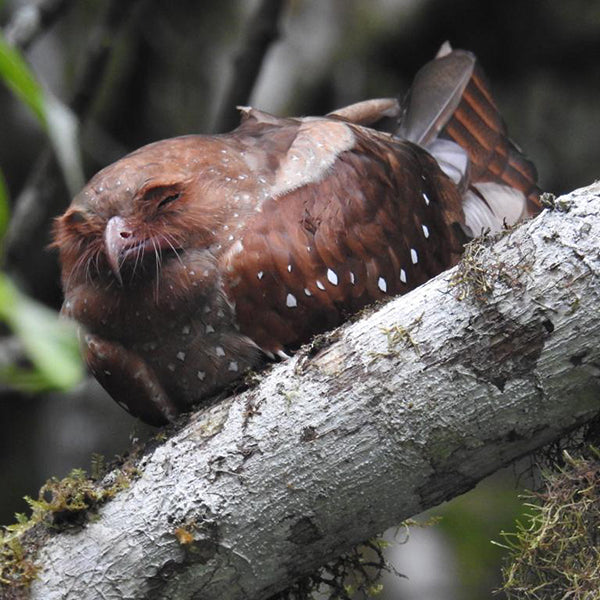Oilbird/Guácharo
The Oilbird (Steatornis caripensis) Read in Spanish
Physical Characteristics: The Oilbird is a large, predominantly brown bird with a stout body, measuring around 35 to 40 cm (14 to 16 inches) in length. It has a wingspan of about 95 cm (37 inches) and distinctive red eyes. One of its most notable features is its large head and enormous mouth, which is adapted for catching fruit.
Nocturnal Behavior: Oilbirds are primarily nocturnal and feed on fruit, especially the fruits of oil palms and tropical laurels. They have a unique method of echolocation, similar to that of bats, to navigate their dark habitats and locate their food sources.
Habitat: Oilbirds are found in caves in montane forests near the equator. They roost during the day in large colonies in dark caves and only emerge at night to forage for food.
Breeding: Oilbirds are known for their communal nesting habits. They often form colonies in large caves, where they build nests on ledges using regurgitated fruit pulp. The female typically lays one or two eggs, which are then incubated by both parents.
Ecological Importance: Oilbirds play a crucial role in seed dispersal within their habitats. By consuming and regurgitating the seeds of the fruits they eat, they help to distribute seeds over large distances, benefiting the regeneration of the forest.

Oilbird
Steatornis caripensis
Guácharo
Size: 19 in | 48 cm
Habitat: Dry deforested lowlands
Height: <3400 m
Photo: by © Juan F. Conde

